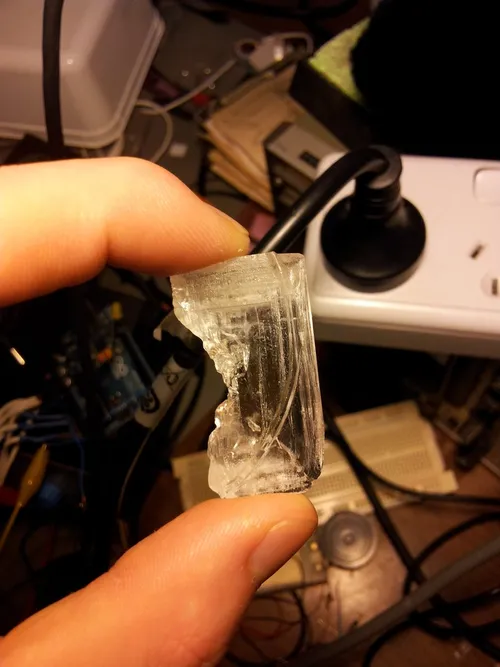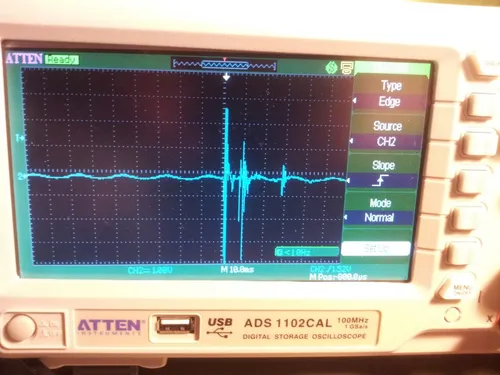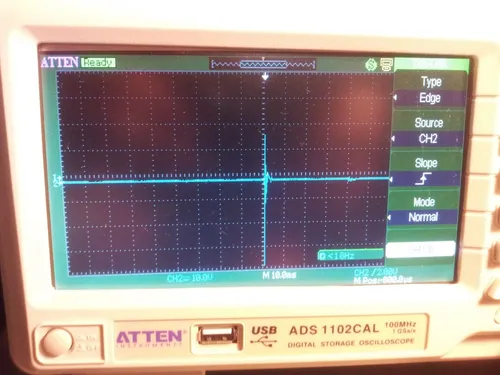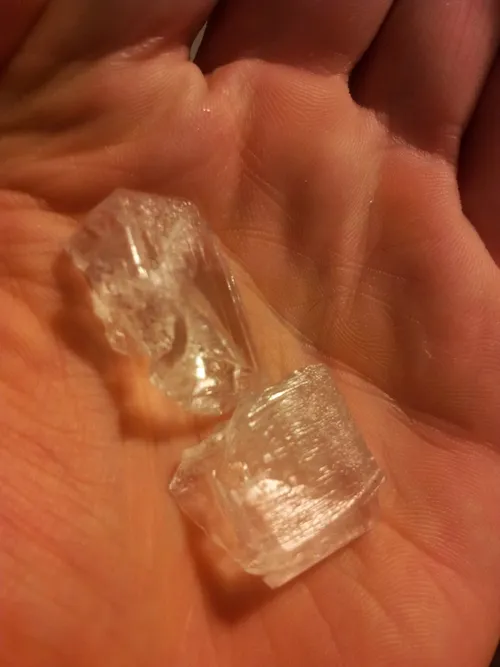Piezo Crystal Formation
Start Date: June 2012 End Date: August 2012 Status: Completed
I can’t claim that this project was my work, as my brother had the idea and did most of the crystal growth. But since I couldn’t see him posting this online any time soon, and I gave advice/helped him along the way/lent him tools, I figured I could add this onto the CladLabs site.
The piezo crystal is potassium sodium tartrate, a double salt which exhibits piezoelectricity. The advantage of this chemical is that it can be made easily from common household items.
The piezo synthesis at RimStar was followed (http://rimstar.org/materials/piezo/how_to_make_rochelle_salt_piezoelectric_crystal.htm). To promote the growth of one large crystal, any small crystals were removed as soon as they started to form. Unfortunately I have no photos of the synthesis (which took a few weeks).
The first photo I got was once the crystals had been grown. The size of the largest crystal is shown below.
To do a crude test of whether or not it would produce a voltage when struck, the crystal was sandwiched between two pieces of tin foil that were connected to an oscilloscope.
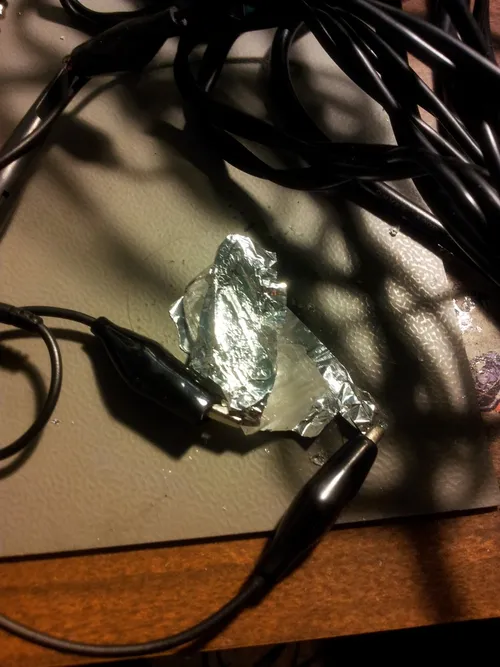
We were not expecting this, but a voltage was generated when we hit it!
To anyone using an oscilloscope: Mains ripple easily gets it way onto the trace (since it’s really an open circuit), but aslong as you set the trigger to manual and at a high enough voltage, you should be able to catch this spike!
An even larger voltage was created when it was hit with the back-end of a screw-driver (not the ideal tool for this, but hey…). At 10V/div, this is about 55V peak-to-peak!
These crystals are quite brittle (they aren’t diamonds!). Not surprisingly, it broke it two shortly after recording 50V across it.
If you want more information about piezos and their use in electronics, see the Piezo Speaker page.


